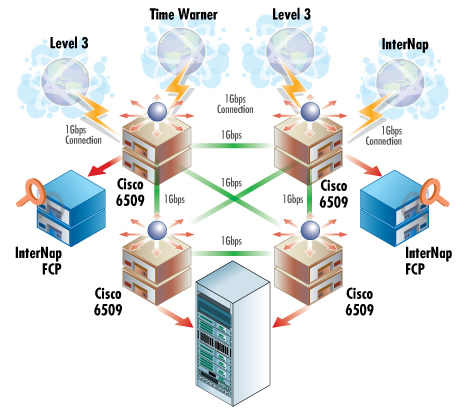|
Types of Routing Protocols
Routing information
protocols (RIP)

|
Interior gateway routing protocol (IGRP)
- It is distance vector IGRP (Interior gateway Protocol) make-believe by Cisco.
- Router used it to exchange routing data within an independent system.
- Interior gateway routing protocol created in part to defeat the confines of RIP (Routing Information Protocol) in large networks.
- It maintains multiple metrics for each route as well as reliability, MTU, delay load, and bandwidth.
- The maximum hop of EIGRP is 255 and routing updates are transmitting 90 seconds.
- It measured in classful routing protocol, but it is less popular because of wasteful of IP address space.
Open shortest path first (OSPF)
- Open Shortest Path First (OSPF) is an active routing protocol used in internet protocol.
- Particularly it is a link state routing protocol and includes into the group of interior gateway protocol.
- Open Shortest Path First (OSPF) operating inside a distinct autonomous system.
- The version 2 of Open Shortest Path First (OSPF) defined in 1998 for IPv4 then the OSPF version 3 in RFC 5340 in 2008.
- The Open Shortest Path First (OSPF) most widely used in the network of big business companies.

Exterior Gateway
Protocol (EGP)
- The absolute routing protocol for internet is exterior gateway protocol which is specified in 1982 by Eric C. EGP (Exterior Gateway Protocol) initially expressed in RFC827 and properly specified in RFC 904 in 1984.
- The Exterior Gateway Protocol (EGP) is unlike distance vector and path vector protocol. It is a topology just like tree.
Enhanced
interior gateway routing protocol (EIGRP)
- Enhanced Interior Gateway Routing Protocol (EIGRP) based on their original IGRP while it is a Cisco proprietary routing protocol.
- It is a distance-vector routing protocol in advance within the optimization to lessen both the routing unsteadiness incurred after topology alteration, plus the use of bandwidth and processing power in the router which support enhanced interior gateway routing protocol will automatically reallocate route information to IGRP (Enhanced Interior Gateway Routing Protocol) neighbors by exchanging the 32 bit EIGRP (Enhanced Interior Gateway Routing Protocol) metric to the 24 bit IGRP metric.
- Generally optimization based on DUAL work from SRI which assured loop free operation and offer a means for speedy junction.

Border Gateway
Protocol (BGP)
- Border Gateway Protocol (BGP) are the core routing protocol of the internet and responsible to maintain a table of Internet protocol networks which authorize network reaching capability between AS.
- The Border Gateway Protocol (BGP) expressed as path vector protocol.
- It doesn’t employ conventional IGP metrics but making routing judgment based on path, network policies.
- It is created to replace the Exterior Gateway Protocol (EGP) routing protocol to permit completely decentralized routing in order to permit the removal of the NSF Net which consent to internet to turn into a truly decentralized system.
- The fourth version of Border Gateway Protocol (BGP)has been in use since 1994 and 4th version from 2006 .
- The 4 version RFC 4271 has many features such as it correct a lots of previous errors, illuminating vagueness and brought t the RFC much nearer to industry practice.
Intermediate
System-to-Intermediate System (IS-IS)
- Intermediate System-to-Intermediate System (IS-IS)is a great protocol used by network devices to determine the best way to promoted datagram from side to side a packet switched network and this process is called routing.
- It was defined in ISO/IEC 10589 2002 within the OSI reference design. Intermediate system-to-intermediate system (IS-IS) differentiate among levels such as level 1and level 2.
- The routing protocol can be changed without contacting the intra area routing protocol.
No comments:
Post a Comment